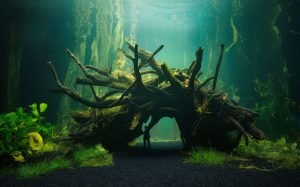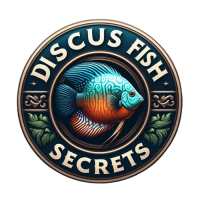Do you agonize over choosing between bogwood vs driftwood for your aquarium? Finding the right material is crucial to elevate your tank from average to extraordinary.

But with the myriad of options out there, how do you know whether bogwood or driftwood is better to aquascape your underwater oasis?
This guide dives deep to unravel the mysteries between these two favorite aquarium woods. You’ll get the insider knowledge you need to select wood that complements your tank inhabitants and creates a visually stunning habitat.
We’ll explore:
- The unique origins and traits of bogwood and driftwood
- How their differences impact your aquarium environment
- Practical guidance on preparation and installation
- Tailoring wood selection to your tank inhabitants
- Design inspiration and tips from expert aquascapers
- And much more!
Follow along as we journey into the nuances of bogwood vs. driftwood. With the insights gleaned here, you’ll elevate your aquarium from everyday to extraordinary in no time.
What Makes Bogwood So Captivating?



First, let’s unearth the allure of bogwood. This jet-black wood derives its haunting beauty from millennia steeping in peat bogs.
Over 10,000 years ago, rising seas submerged oak, pine, and yew trees in Ireland’s sprawling peat wetlands. The bog’s acidic waters preserved the wood, saturating it with tannins and minerals over thousands of years.
Today, the inky relics harvested from these bogs become decorative centerpieces purified for aquarium use.
Bogwood stands out for its:
- Jet black color – Saturated with dark tannins
- Twisted shapes – Prehistoric gnarled textures
- Peaty aroma – Earthy fragrance when damp
- Softening effects – Gradually lowers pH
- Tea-stained water – Leaches color from tannins
With its prehistoric contours and deep hues, bogwood emanates mystique and brings ancient forests to life underwater.

What Gives Driftwood Its Rugged Charm?
Now let’s explore the weathered beauty of driftwood. This wood earns its signature silver-grey palette from tumbling along ocean coasts and river banks.
Currents polish once-jagged edges into smooth curves. Exposure slowly bleaches color from the wood, leaving behind mineral stains.

Driftwood delights with its:
- Muted natural tones – Grays, silvers, and creams
- Smooth textures – Water-worn and sandy
- Neutral pH – Won’t alter water chemistry
- Varying sizes – From tiny twigs to massive boulders
- Natural appeal – Mimics river and beach environments
With sizes for every application and hues that complement aquatic life, it’s no wonder driftwood is a staple of aquascaping.
Bogwood vs. Driftwood: How They Compare
Now that we appreciate the allure of each wood, let’s directly compare their differences:
| Factor | Bogwood | Driftwood |
|---|---|---|
| Origin | Ancient peat bogs | Coasts, rivers, lakes |
| Color | Jet black | Bleached grays & browns |
| Texture | Gnarly twists | Smooth, weathered |
| Tannins | Releases abundantly | Leaches minimally |
| Size | Usually smaller pieces | Varying from small to massive |
| pH | Lowers pH | Negligible effect |
| Look | Striking statement | Natural blend |
How These Differences Impact Your Aquarium
At first glance bogwood and driftwood may appear similar. But their diverging properties have meaningful effects in your aquarium when it comes to water chemistry and inhabitants.
For example, the substantial tannins released by bogwood lower pH and recreate “blackwater” conditions found in some natural freshwater habitats, like the Amazon River basin. Fish from those environments, including tetras and rams, tend to thrive under these conditions.
Meanwhile, driftwood barely impacts water chemistry at all. This makes it suitable for a wider range of aquariums. Livebearers appreciate driftwood’s minimal tannin influence, which avoids reducing the higher pH they prefer.
There are also compatibility considerations stemming from appearance. For instance, bogwood’s dramatic black shades create captivating contrast against brightly colored species like discus and angelfish. Driftwood’s neutral weathered hues blend in more naturally with subtle fish.
Understanding these nuanced effects allows you to select wood aligned to your tank goals. Keep inhabitants and aesthetics in mind as we dive into recommendations.
Tailor Your Selection to Your Tank Inhabitants
To pick wood suited for your aquarium, consider which species you’re housing:
For Bogwood Tanks:
- Angelfish
- Discus
- Tetras
- Rams
- pencilfish
- Loricariidae catfish
These species mirror bogwood’s origins in South America’s acidic blackwater rivers. They will thrive with bogwood’s pH-lowering influence and sheltered overhangs.
For Driftwood Tanks:
- Guppies
- Mollies
- Platies
- Cichlids
- Rainbowfish
- Gouramis
- Shrimp
Expect these inhabitants to flourish in driftwood’s mineral-rich, pH-neutral environment modeled after coastal mangroves and lake ecosystems.
Of course, always cater to the specific needs of your livestock first and foremost when selecting tank enhancements. Never compromise inhabitant health for aesthetics alone.
Get Expert Aquascaping Guidance
Beyond scientific considerations, wood selection influences the overall aquascape theme.
We asked expert aquascaper Amano Armani of @aquaWOW for his insights on working with bogwood vs. driftwood:

“Bogwood’s imposing black branches pair beautifully with brightly colored plants like Ludwigia. The striking contrast creates depth. I love to use weathered mopani driftwood to mimic fallen trees across riverbanks. Its natural hues blend seamlessly into the landscape.”
Preparation and Installation Tips
Once you’ve selected the perfect wood, proper handling avoids unwelcome surprises down the road:
- Source from aquarium retailers to ensure the wood is safe for prolonged water immersion. Avoid uncured woods from craft stores.
- Clean gently. Use a stiff bristle brush under running water. Avoid soap or chemicals.
- Boil or soak new wood for several weeks before installing to prevent excessive tannin leaching.
- Add a splash of vinegar to the soak water to help prevent mold growth.
- Weight down wood with clean rocks or steel mesh to prevent buoyancy issues. Soaking helps saturation.
- Arrange attractively before permanently placing in the tank. Consider sight lines and providing caves or overhangs.
With the right acclimation prep and creative placement, both bogwood and driftwood can elevate your aquascape to a work of art.
Convert Your Aquarium from Average to Extraordinary
Empowered with insider knowledge on selecting, preparing, and arranging bogwood vs. driftwood, you’re ready to elevate your aquarium to a living work of art.
Tailor your wood choice to the natural environments of your fish inhabitants. Complement colors and textures within the broader aquascape theme.
Remember that nature herself takes millennia to create the captivating hues and contours of wood. Be patient in allowing the tannins to gradually and safely leach into the water column to avoid shocking your livestock.
Soon your underwater oasis will transform from average to extraordinary. Just sit back and let the mesmerizing natural wood magic unfold!
We’d love to see your stunning aquascapes come to life



